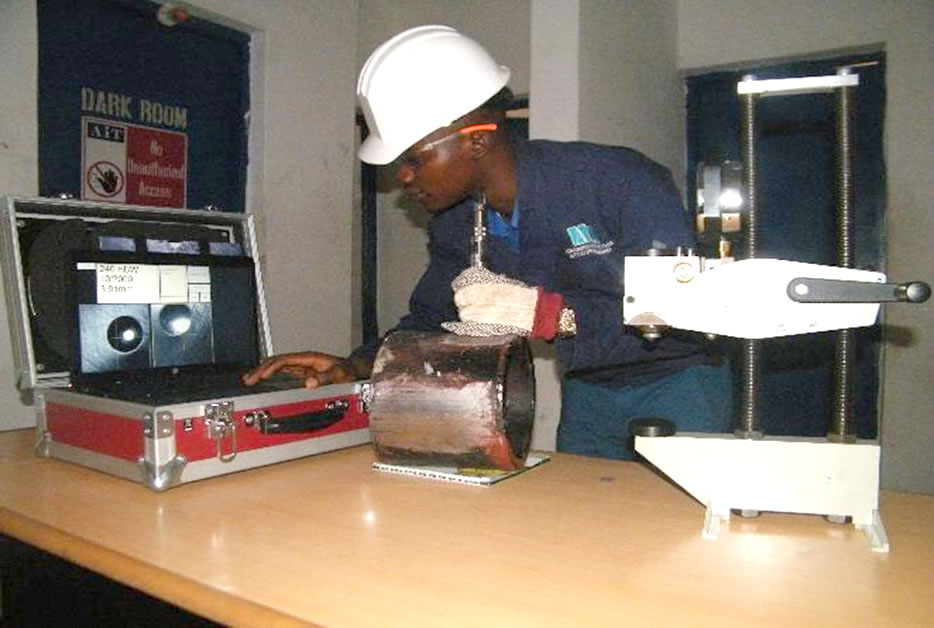BRINELL HARDNESS MEASUREMENT INSPECTION

The Brinell hardness test method as used to determine Brinell hardness, is defined in ASTM E10. Most commonly it is used to test materials that have a structure that is too coarse or that have a surface that is too rough to be tested using another test method. Brinell testing often use a very high test load (3000 kgf) and a 10mm wide indenter so that the resulting indentation averages out most surface and sub-surface inconsistencies.
Typically the greatest source of error in conventional Brinell testing is the measurement of the indentation. Due to disparities in operators making the measurements, the results will vary even under perfect conditions. Less than perfect conditions can cause the variation to increase greatly. Frequently, the test surface is prepared with a grinder to remove surface conditions. The jagged edge makes interpretation of the indentation difficult.
Two types of technological remedies for countering these Brinell measurement error problems have been developed over the years. Automatic optical Brinell scopes, also known as Britronics-LTuses computers and image analysis to read the indentations in a consistent manner. This standardization helps eliminate operator subjectivity so operators are less prone to automatically view in-tolerance results when the sample’s result may be out of tolerance.
Career path
Adding expertise by achieving additional methods/techniques certification improves your job opportunities and options and often leads you down a more fulfilling and exciting career path.
In line with our cardinal quality objective and prime policy to be ahead of others by adequately satisfying our clients/customers and continuously improving our service delivery. We at Advanced Inspection &Testing Co. Ltd. Have therefore taken another milestone to acquire this latest hardness Inspection technology for carrying out Brinell Hardness Measurement inspection in the Oil & Gas industry.


